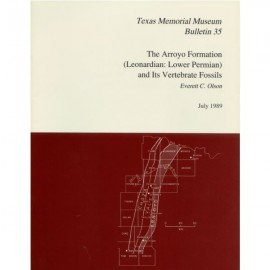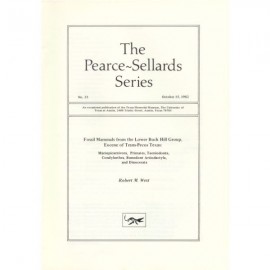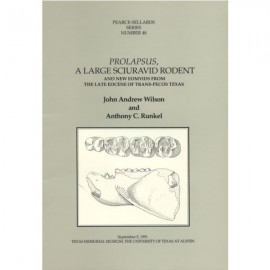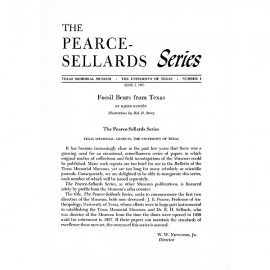Reports of Investigations
-
Books & Reports
- Reports of Investigations
- Guidebooks
- Udden Series
- Geological Circulars
- Down To Earth
- Atlases of Major Oil and Gas Reservoirs
- Texas Memorial Museum Publications
- Environmental Geologic Atlas of the Texas Coastal Zone
- Mineral Resource Circulars
- Other Reports
- Seminars and Workshops
- Handbooks
- Submerged Lands of Texas
- Symposia
- Annual Reports
- Open File Reports
-
Maps & Cross Sections
- Thematic Maps
- Miscellaneous Maps, Charts & Sections
- Geologic Atlas of Texas
- STATEMAP Project Maps
- Geologic Quadrangle Maps
- Cross Sections
- Highway Geology Map
- Energy and Mineral Resource Maps
- Shoreline Change and Other Posters
- Wilcox Group, East Texas, Geological / Hydrological Folios
- Bouguer Gravity Atlas of Texas
- River Basin Regional Studies
- Featured Maps
- Posters
- Teachers & the Public
-
Geological Society Publications
- Gulf Coast Association of Geological Societies
- Alabama Geological Society
- Austin Geological Society
- Corpus Christi Geological Society
- Houston Geological Society
- Lafayette Geological Society
- Mississippi Geological Society
- New Orleans Geological Society
- South Texas Geological Society
- GCS SEPM Publications
- Historic BEG & UT Series
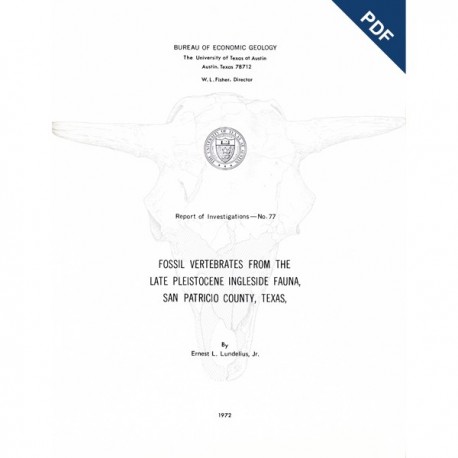
Fossil Vertebrates from the Late Pleistocene Ingleside Fauna, San Patricio County, Texas. Digital Download
RI0077D
A free, digital version of this publication can be found on: Texas ScholarWorks
To purchase a print version (if available): RI0077
RI0077D. Fossil Vertebrates from the Late Pleistocene Ingleside Fauna, San Patricio County, Texas, by E. L. Lundelius, Jr. 74 p., 59 figs., 52 tables, 1 plate, 1972. doi.org/10.23867/RI0077D. Downloadable PDF
To purchase this publication in book format, please order RI0077.
ABSTRACT
Fresh-water pond deposits at Ingleside, San Patricio County, Texas, have yielded a large Pleistocene vertebrate fauna. The bones are derived from calcareous sands and marls which overlie a marine lagoonal clay. The locality is located just west of the axis of Live Oak Ridge. This ridge, along with the Ingleside Terrace to the east, was formed as a barrier island and lagoon when sea level was higher than at present.
The Ingleside barrier and lagoon are correlated with the Pamlico Terrace of the east coast of the United States, which is currently correlated with the Sangamon interglacial stage. The fresh-water pond formed after the barrier and lagoon, probably by wind deflation during a time when the water table was low, corresponding to a period of lowered sea level.
The fauna contains a diverse assemblage of Pleistocene mammals, birds, reptiles, amphibians, and fish; it consists of two principal elements:(1) extinct forms such as Tanupolama, Camelops, Mammuthus, Mammut, Paramylodon, Megalonyx, Equus complicatus, Canis dirus, Platygonus, Bison antiquus, Geochelone crassiscutata, and Gopherus hexagonata; and (2) extant forms such as Odocoileus virginianus, Canis latrans, Peromyscus leucopus, and Mephitis mephitis. A third element usually well represented in Pleistocene faunas—extant forms no longer found in the area—is represented by a very few forms such as Cynomys. Thescarcity of this element is a result of the poor representation of the small-sized animals in the fauna.
Several species, such as Tanupolama mirifica and Paramylodon harlani, are represented by samples large enough to give information on variability. The diversity of the large mammalian fauna indicates the presence of diverse habitats in the Ingleside area. The presence of large tortoises, such as Geochelone and Gopherus hexagonata, indicates mild winters. The age structure of the Tanupolama mirifica sample indicates the existence of seasonality of some climatic factor, probably rainfall.
Keywords: fauna, Ingleside, Pleistocene, San Patricio County, Texas
Citation
Lundelius, E. L., Jr., 1972, Fossil Vertebrates from the Late Pleistocene Ingleside Fauna, San Patricio County, Texas: The University of Texas at Austin, Bureau of Economic Geology, Report of Investigations No. 77, 74 p.

